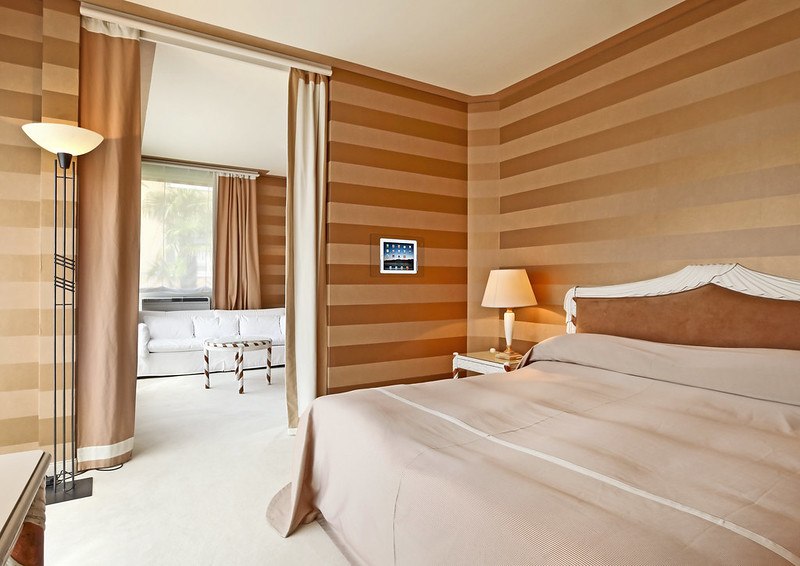There’s so much fun to be had when it comes to layering and styling your bed. From choosing the right colors and materials, to working out which combination of layers suit you best, it’s the perfect way to express your personal style in the bedroom. A properly layered bed allows you to create a luxuriously comfortable sleeping experience – especially if you’re someone who runs hot or cold in their sleep – so that each night when you jump into bed it’s as cosy and inviting as possible. Without further ado, here’s how to layer your bed for ultimate comfort.
Mattress protector
When it comes to layering your bed, the best place to start is with a mattress protector. When
we sleep, our bodies inevitably expel sweat, oils and dead skin. Over time, moisture and bacteria can break down the internal structure of a mattress, eventually compromising the comfort and longevity of your bed. A mattress protector creates a dust-proof and waterproof shield around your mattress, while still allowing it to breathe – ultimately extending the lifespan of your bed (and protecting it from accidental spills and stains!).
Beyond a mattress protector, there are a few other options when it comes to boosting the comfort and breathability of your mattress. A mattress pad is a thin layer of material added on top, which can once again protect the mattress and add a little extra cushioning. Meanwhile, a mattress topper is a thicker piece of material used to adjust the firmness of a mattress and even counteract sagging or indentations. A topper made from natural latex can also help your mattress breathe and regulate the temperature of your bed by allowing for extra air circulation.
Sheets
Once you’ve decided on the right mattress protector, pad and topper combination for you, it’s time to move onto your sheets. Sheets can have a big impact on the overall feel of your bed, and with so many different materials to choose from these days, it’s important to take the time to choose the one that best suits you. Each material has its own unique look and texture: from the crisp, classic feel of cotton percale to silky, smooth bamboo or the rustic finish of linen.
If you’re someone who runs hot in their sleep, cotton, linen, bamboo and eucalyptus are all great choices. These materials are lightweight and breathable, allowing for maximum airflow. The latter three also have moisture-wicking properties, meaning they are capable of absorbing any excess moisture.
On the other hand, heavier-weight cotton, fleece and flannel are great options for cooler months, or if you’re someone who finds it hard to keep warm. You may even find that you opt for one kind of material in summer and another in winter. While it can be tempting to try and cut costs in the sheet department, good quality sheets make all the difference and it really pays off to invest in a decent set.
Once you’ve picked your material, it’s time to decide what combination of sheets you’ll use. While it’s common to start with a fitted sheet and layer a top sheet above, these days some people simply skip the latter. A top sheet is good for keeping your quilt or duvet clean, while also helping you regulate the temperature (perfect for when it’s too hot for a blanket). For others, a top sheet is an annoying addition that always ends up scrunched up at the end of the bed. Ultimately, it’s up to you!
Quilt or duvet
Depending where you are in the world, sometimes the terms quilt and duvet are used interchangeably, but in certain countries a quilt refers to a three-layered textile that typically features a decorative pattern on top. In places with colder climates, a quilt is often layered underneath a duvet to add an extra layer of warmth. On the other hand, a duvet is a type of bedding usually made from soft down, feathers or synthetic fibres, which is then placed in a duvet cover. For warmer locations, often only a duvet is needed, even in the coldest months.
Once again, a duvet cover is important as it helps your duvet stay clean and ultimately last longer. Plus, if you own more than one cover, you can mix up the color scheme and style of your bed.
Pillows
Pillows are a great way to finish off a bed and add extra dimension, colour and comfort. There are plenty of different kinds of pillows to choose from, with latex and memory foam particularly good when it comes to keeping the bed cool. Once you’ve decided on your primary pillows, it’s time to think about extra cushions. European pillows are large, square pillows usually used for decorative purposes – and also good for propping yourself up while sitting in bed – meanwhile, shams are smaller pillows that are also great for accessorising your bed. How many pillows you add is completely up to you!
When it comes to layering and styling your bed, at the end of the day, it’s important to simply focus on whatever feels right for you. That way, you’ll be sure to end up with a bed that oozes maximum comfort, which you simply can’t wait to jump into every night!


